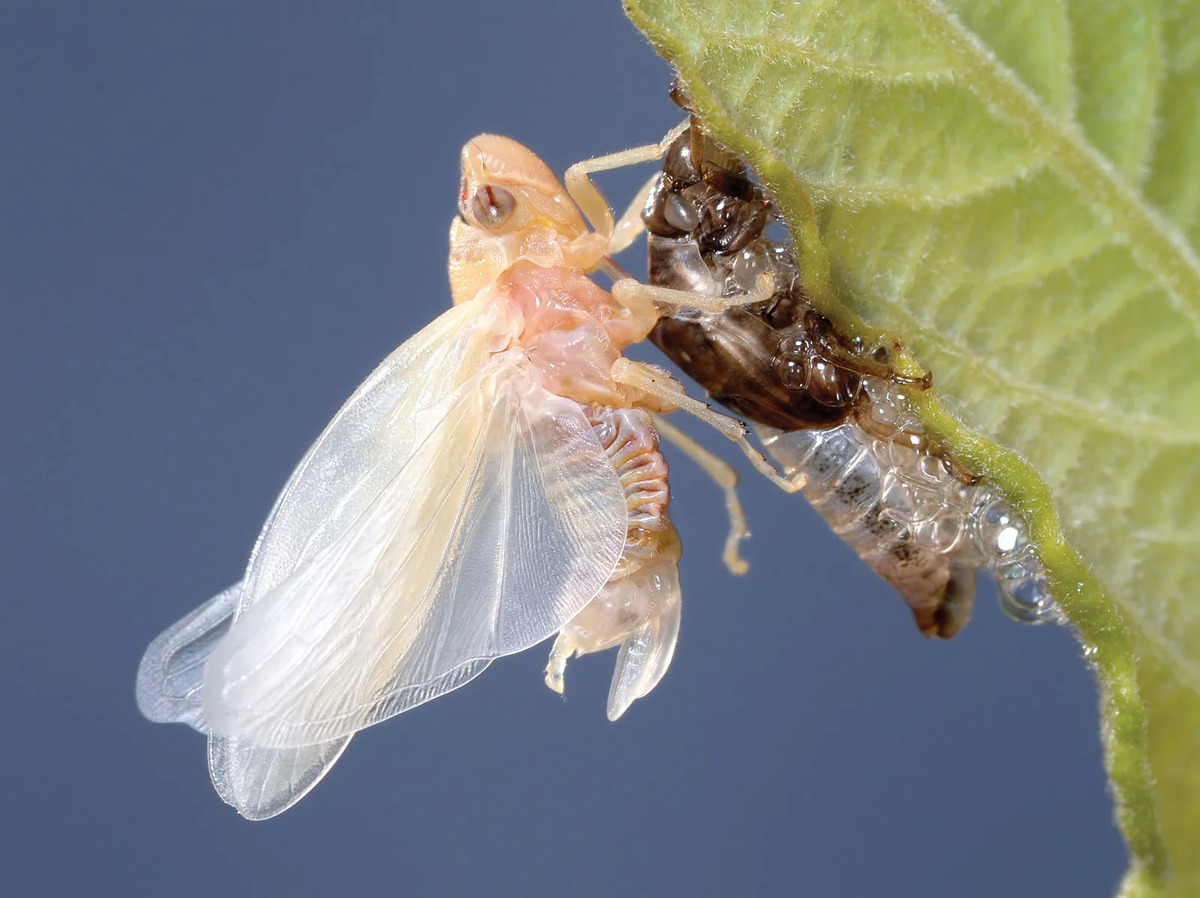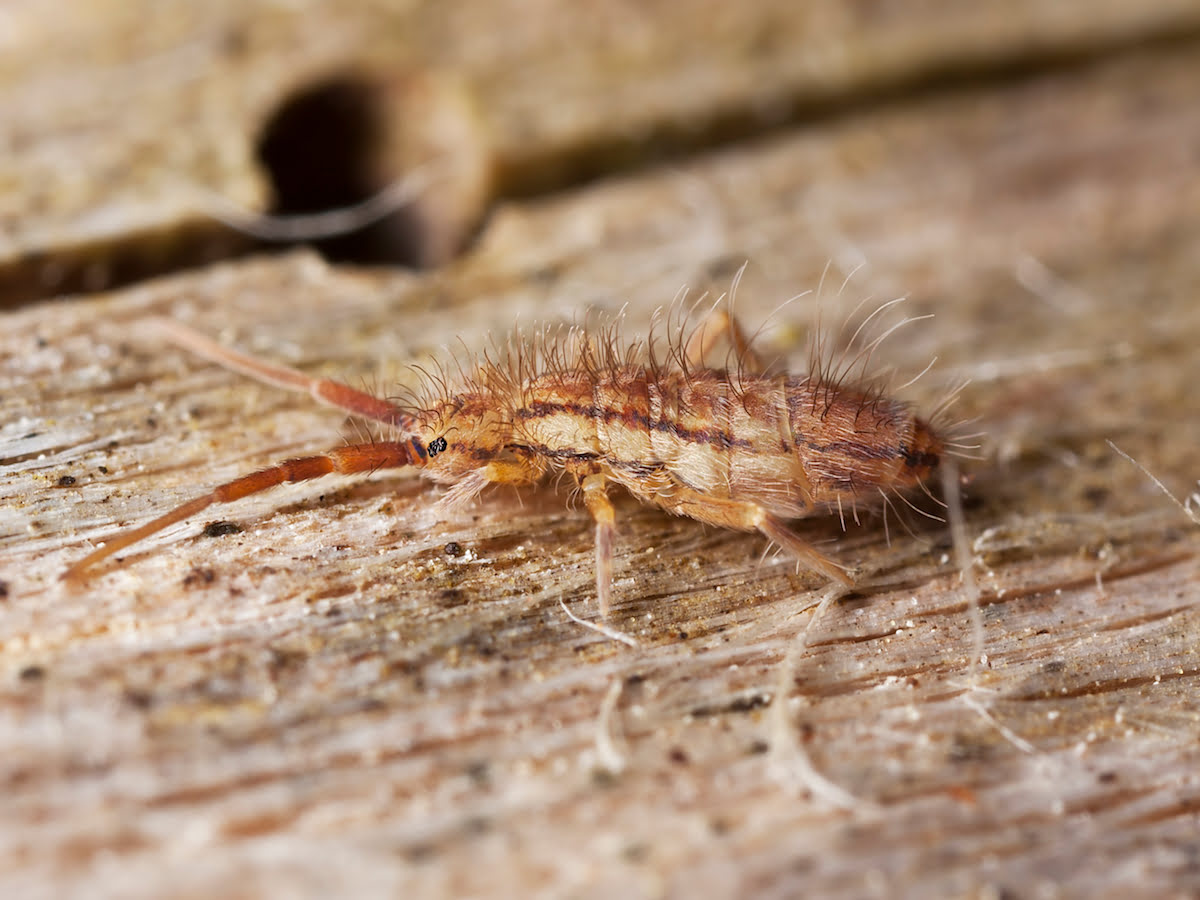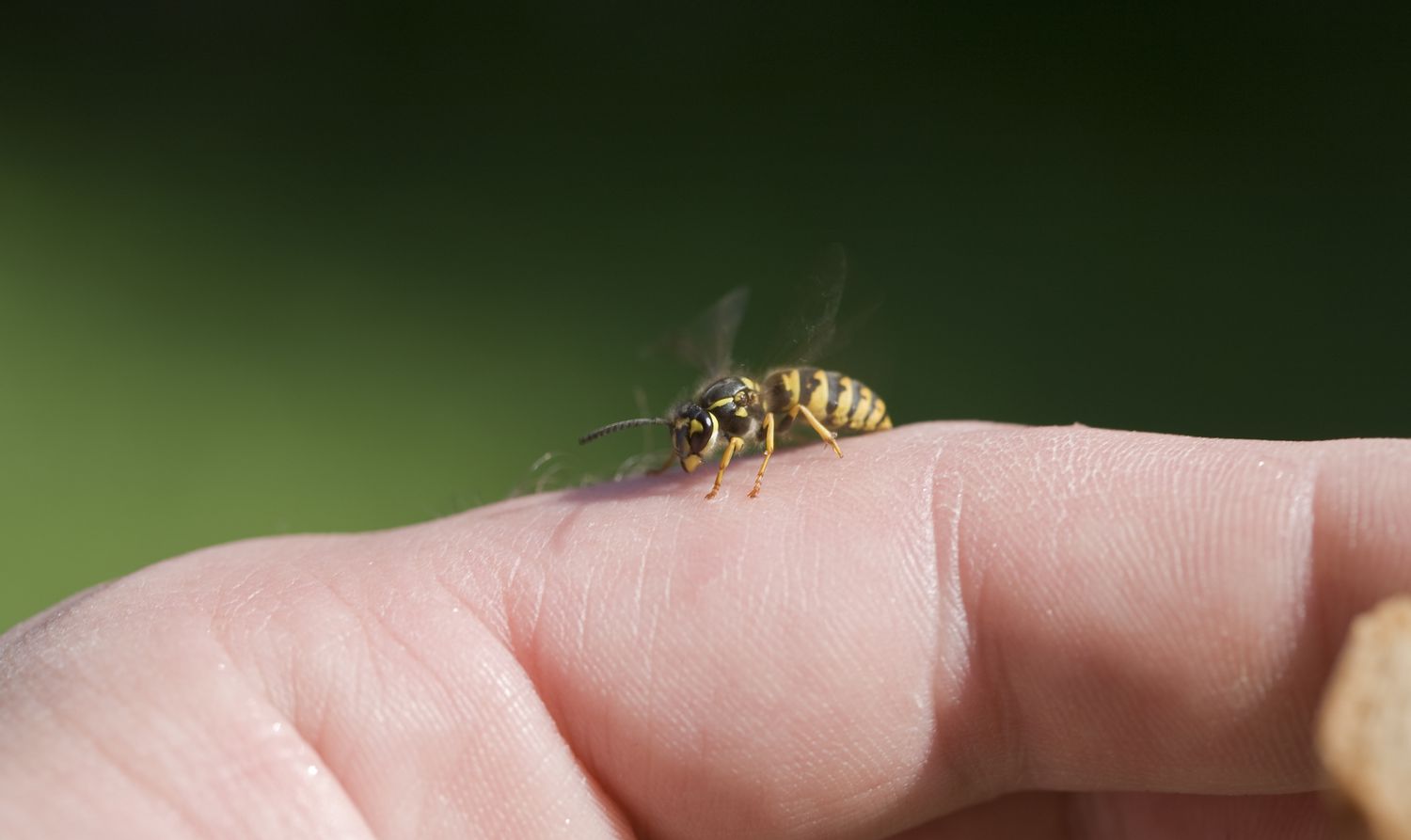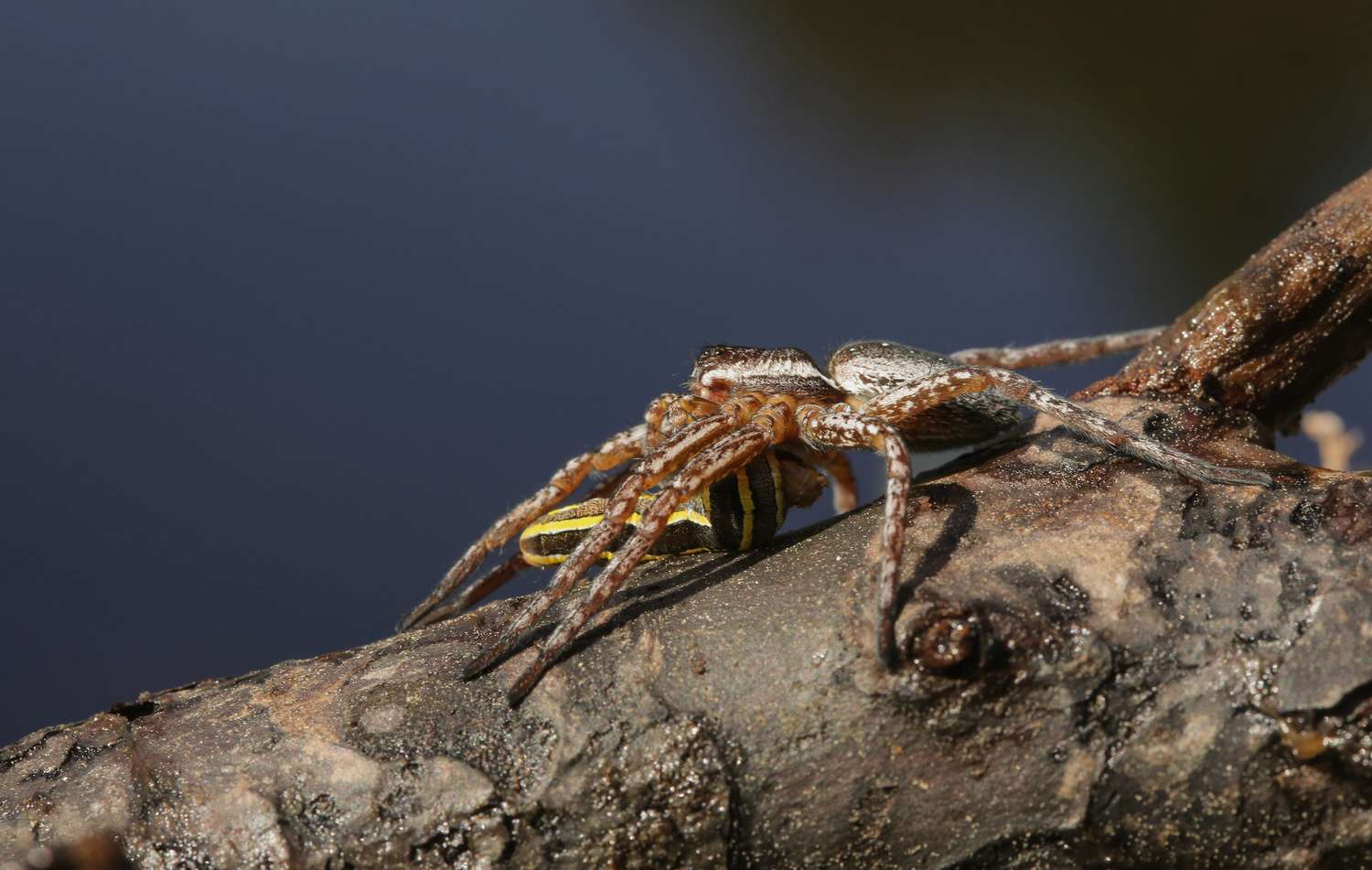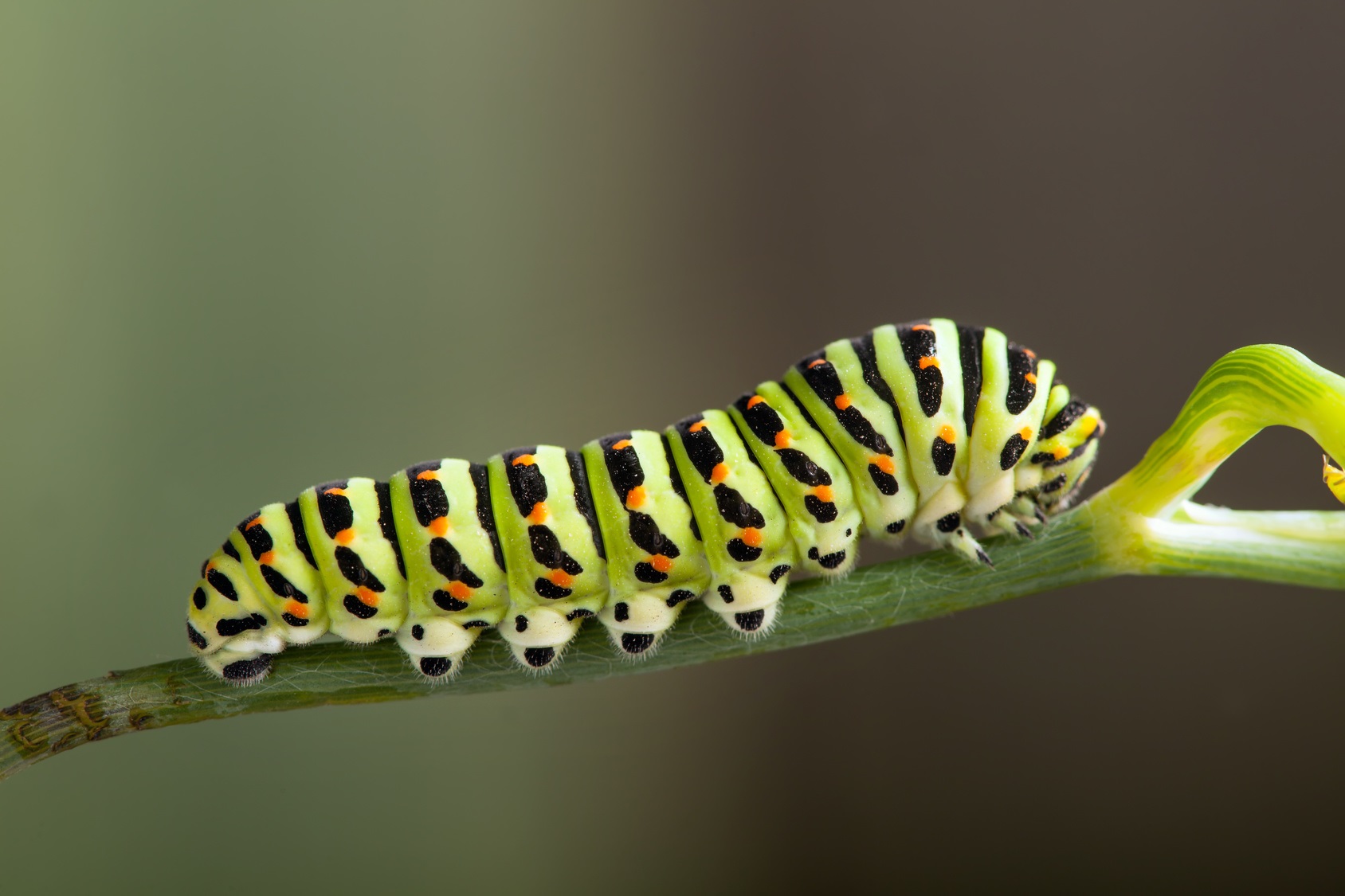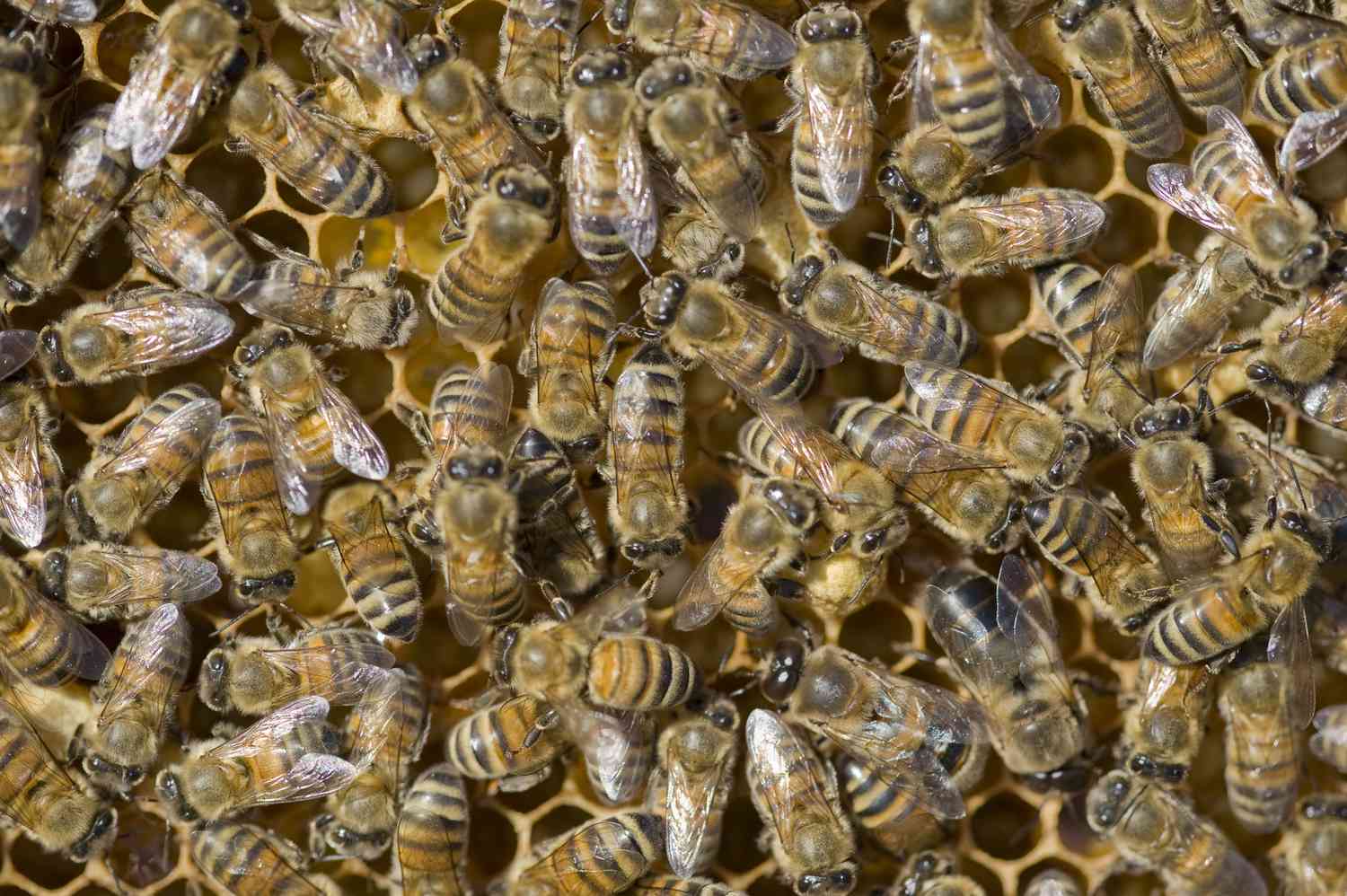Home>Gardening News and Trends>Latest News>What Insects Are Edible
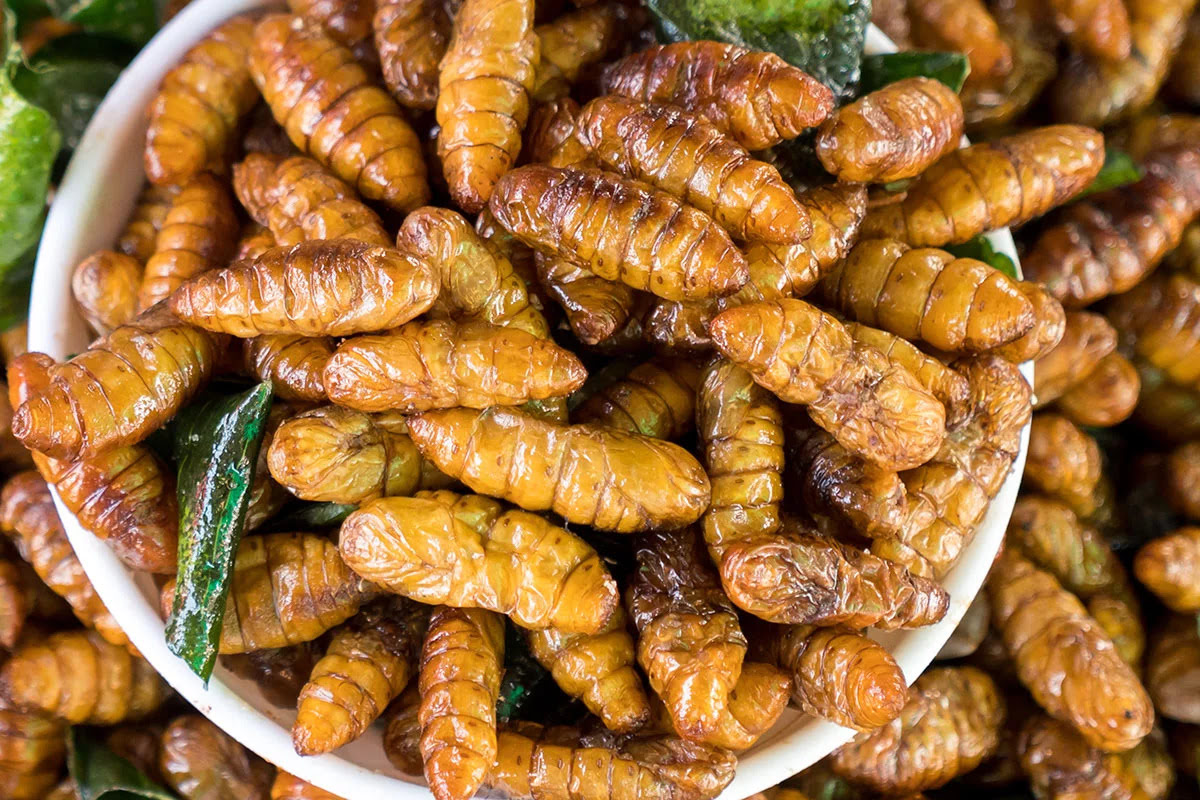

Latest News
What Insects Are Edible
Modified: January 22, 2024
Discover the latest news on edible insects and learn about different types that are safe to eat. Find out the nutritional benefits and how to incorporate them into your diet.
(Many of the links in this article redirect to a specific reviewed product. Your purchase of these products through affiliate links helps to generate commission for Chicagolandgardening.com, at no extra cost. Learn more)
Table of Contents
- Introduction
- Benefits of Eating Insects
- Nutritional Value of Edible Insects
- Cultural Significance of Edible Insects
- Common Types of Edible Insects
- Preparation and Cooking Methods for Edible Insects
- Safety Considerations for Consuming Edible Insects
- Environmental Impact of Eating Insects
- Future Potential of Edible Insects in the Food Industry
- Conclusion
Introduction
Eating insects, also known as entomophagy, is a practice that has been followed by various cultures around the world for centuries. While it may seem unconventional to some, insects have long been considered a valuable food source due to their abundance and rich nutritional content. In recent years, there has been a growing interest in incorporating edible insects into mainstream diets as a sustainable and environmentally friendly alternative to traditional livestock.
One of the key reasons why people are exploring the idea of consuming insects is the significant environmental benefits that come with it. Compared to conventional livestock farming, rearing insects requires significantly less land, water, and feed. In addition, insects produce fewer greenhouse gas emissions, such as methane, making them a more sustainable and eco-friendly food choice.
Aside from the environmental aspect, insects also offer a wide range of nutritional benefits. They are packed with protein and are a rich source of essential amino acids, vitamins, and minerals. Some species of insects, such as crickets and mealworms, are believed to have high levels of omega-3 fatty acids, which are beneficial for heart health and brain function.
While entomophagy may be a relatively new concept in certain parts of the world, it has long been embraced in many cultures. Insects have been a traditional food source for Indigenous communities in Africa, Asia, and Latin America for generations. They are often incorporated into local cuisines, offering unique flavors and textures that add depth and variety to culinary traditions.
As the world grapples with the challenges of feeding a growing population and reducing the impact of agriculture on the planet, the potential of edible insects as a sustainable food source is gaining attention. Various organizations and research institutions are exploring innovative ways to incorporate insects into processed foods, such as protein bars, snacks, and even burgers. The goal is to normalize the consumption of insects and make them more accessible to a wider audience.
Benefits of Eating Insects
When considering the benefits of eating insects, it’s important to recognize the positive impact this practice can have on both our health and the environment. Here are some key advantages:
1. Nutritional Value: Insects are highly nutritious, containing essential proteins, vitamins, and minerals. They are particularly rich in iron, calcium, and zinc. Additionally, some insect species are a good source of healthy fats, such as omega-3 fatty acids.
2. Sustainable Food Source: Raising insects requires significantly less space, water, and feed compared to traditional livestock. Insects also have a much shorter lifespan, allowing for faster reproduction and a quicker turnover rate of food production. This makes them a more sustainable alternative to meet the growing demand for protein in our global food system.
3. Reduced Greenhouse Gas Emissions: The production of insect protein has a significantly lower environmental impact compared to livestock farming. Insects emit fewer greenhouse gases, such as methane, and they require less land and water resources. By incorporating insects into our diets, we can help mitigate climate change.
4. Biodiversity Conservation: The demand for meat has contributed to deforestation and the destruction of natural habitats for livestock farming. By shifting towards insect-based diets, we can reduce the pressure on natural ecosystems and help preserve biodiversity.
5. Economic Opportunities: The edible insect industry has the potential to create new economic opportunities, particularly in developing countries where insect farming can provide a livelihood for local communities. Insect farming requires less capital investment and can be done on a small scale, making it accessible to individuals with limited resources.
6. Culinary Versatility: Insects offer a wide range of flavors and textures, making them a versatile ingredient in various dishes. From crispy fried crickets to protein-rich mealworms in soups and stews, incorporating insects into our recipes can add depth and novelty to our culinary experiences.
Overall, embracing the consumption of insects can lead to a more sustainable and resilient food system while providing us with nutritious and unique food options.
Nutritional Value of Edible Insects
Edible insects have gained recognition for their impressive nutritional profile. They are packed with essential nutrients that our bodies need to function properly. Here are some key aspects of the nutritional value of edible insects:
1. Protein: Insects are an excellent source of protein, which is essential for building and repairing tissues in our bodies. The protein content of insects can be comparable to or even higher than that of traditional animal sources, such as beef or chicken. Crickets, for example, contain about 69% protein by dry weight.
2. Amino Acids: Insects provide a complete amino acid profile, including all nine essential amino acids that our bodies cannot produce on their own. Amino acids are the building blocks of proteins and play a crucial role in various biological processes, such as muscle function, hormone production, and immune system support.
3. Vitamins: Edible insects are a rich source of vitamins, including vitamin B12, which is predominantly found in animal-derived foods. Vitamin B12 is essential for red blood cell production and nerve function. Insects also contain vitamins such as riboflavin (B2), niacin (B3), and folate (B9).
4. Minerals: Insects are abundant in minerals such as iron, zinc, calcium, and magnesium. Iron is essential for oxygen transport in the body, while zinc plays a vital role in immune system function and wound healing. Calcium is crucial for strong bones and teeth, and magnesium is involved in over 300 biochemical reactions in our bodies.
5. Fatty Acids: Certain insect species, such as mealworms and crickets, contain high levels of healthy fats, particularly omega-3 fatty acids. Omega-3 fatty acids have been linked to various health benefits, including heart health, brain function, and reducing inflammation in the body.
It’s important to note that the nutritional composition of edible insects can vary depending on the species, their stage of development, and their diet. However, overall, insects provide a diverse range of essential nutrients that can contribute to a well-rounded and balanced diet.
As the acceptance and consumption of edible insects continue to grow, further research is being conducted to better understand their nutritional value and potential health benefits. With their impressive nutrient content, incorporating edible insects into our diets can contribute to a sustainable and nutrient-rich food system.
Cultural Significance of Edible Insects
The consumption of edible insects holds a deep cultural significance in many societies around the world. For generations, insects have been an integral part of traditional diets and culinary practices. Here are some key aspects of the cultural significance of edible insects:
1. Indigenous Knowledge: Indigenous communities have long recognized the value of insects as a vital food source. In many regions of Africa, Asia, and Latin America, insects are a traditional and culturally significant component of local cuisines. These communities have developed intricate knowledge and techniques for harvesting, preparing, and cooking insects, passing down their cultural practices from one generation to another.
2. Culinary Diversity: Insects offer a wide range of flavors, textures, and culinary possibilities. Different insect species are used in various dishes and preparations, providing diversity and uniqueness to local cuisines. From deep-fried crickets and roasted mealworms to crispy fried ants and spicy silkworm larvae, the culinary traditions surrounding edible insects are as diverse as the cultures that embrace them.
3. Rituals and Ceremonies: Insects play a role in religious and cultural ceremonies in some communities. They may be incorporated into special dishes or consumed during specific celebrations and rituals. In some cultures, the consumption of certain insect species is believed to bring good luck, fertility, or protection against evil spirits.
4. Cultural Identity: Edible insects contribute to the cultural identity and heritage of communities that have a long history of insect consumption. They represent a connection to ancestral traditions and practices, fostering a sense of belonging and pride in cultural heritage.
5. Economic Importance: Insect harvesting and trading can play a significant role in local economies, particularly in regions where insects are abundant. The sale of edible insects provides income and livelihood opportunities for many people, contributing to local economies and supporting sustainable livelihoods.
By recognizing and respecting the cultural significance of edible insects, we can not only preserve and celebrate culinary diversity but also promote cultural resilience and sustainable practices. Embracing the cultural heritage of edible insects allows us to appreciate and learn from the wisdom and knowledge of indigenous communities who have valued and utilized insects for centuries.
Common Types of Edible Insects
Across different cultures, a variety of insect species are consumed as a regular part of the diet. These edible insects provide a diverse range of flavors and textures, contributing to the culinary traditions of various regions. Here are some common types of edible insects:
- Crickets: Crickets are one of the most popular and widely consumed edible insects. They are rich in protein, low in fat, and have a nutty flavor. Crickets can be enjoyed roasted, fried, or ground into a powder for use in baked goods or protein bars.
- Mealworms: Mealworms, the larvae of darkling beetles, are another common type of edible insect. They are high in protein, fiber, and omega-3 fatty acids. Mealworms have a mild, slightly nutty taste and can be used in a variety of dishes, including stir-fries, salads, and baked goods.
- Grasshoppers and Locusts: Grasshoppers and locusts are widely consumed in various cultures around the world. They are rich in protein, vitamins, and minerals. These insects have a slightly nutty or grassy flavor and are often enjoyed roasted, fried, or used in soups and stews.
- Ants: Ants are consumed in different forms, such as carpenter ants and leaf-cutter ants. They are known for their tangy and acidic flavors. In some cuisines, ants are used in sauces, salsas, or sprinkled over dishes as a flavor enhancer.
- Silkworms: Silkworm larvae are commonly consumed in certain Asian countries. They are rich in protein, low in fat, and have a slightly nutty taste. Silkworms can be deep-fried, stir-fried, or boiled and enjoyed as a snack or used in various recipes.
These are just a few examples of the wide variety of edible insects available. It’s important to note that different regions and cultures have their own unique types of edible insects, adding to the culinary diversity and exploration of entomophagy.
As the acceptance of edible insects continues to grow, more innovative ways of incorporating them into everyday cuisine are being explored. From protein bars and snacks to insect-based burgers and pasta, edible insects are gradually making their way into mainstream food culture.
Preparation and Cooking Methods for Edible Insects
When it comes to preparing and cooking edible insects, there are various methods that can be used to enhance their flavors and textures. It’s important to ensure that the insects are properly cleaned and cooked to guarantee food safety. Here are some common preparation and cooking methods for edible insects:
- Roasting: Roasting is a popular method for cooking edible insects. It helps to bring out their natural flavors and creates a crispy texture. Insects can be roasted in a preheated oven or on a stovetop using a dry pan until they become golden brown and crunchy.
- Frying: Frying is another common method used to cook edible insects. Insects can be deep-fried or pan-fried with a bit of oil to achieve a crispy texture. This method is particularly suitable for larger species like crickets and grasshoppers.
- Boiling: Boiling is a simple and efficient method for cooking edible insects, especially smaller ones like mealworms or ants. Insects can be boiled in salted water for a few minutes until they become tender. Boiled insects can be added to various dishes like soups, stews, or salads.
- Grilling: Grilling is a fantastic way to add a smoky flavor to edible insects. Insects can be placed on skewers or in a grilling basket and cooked over a medium heat grill until they become crisp and slightly charred. This method works well for larger insects like grasshoppers or locusts.
- Baking: Baking is a versatile cooking method that can be used for edible insects. Insects can be baked at a moderate temperature with spices or seasonings to enhance their flavor. Baked insects can be used as a crunchy topping for salads or added to baked goods like bread or cookies.
Before cooking, it’s important to ensure that the insects are properly cleaned and prepared. This includes removing any wings, legs, or other inedible parts. It is recommended to source edible insects from trustworthy suppliers to ensure their quality and safety.
As with any food, it’s important to consider personal taste preferences and experiment with different cooking methods and flavor combinations. By being open to new culinary experiences, we can discover delicious ways to incorporate edible insects into our meals.
Safety Considerations for Consuming Edible Insects
While consuming edible insects can be a nutritious and sustainable choice, it’s important to pay attention to safety considerations to ensure a pleasant and risk-free experience. Here are some key safety considerations to keep in mind:
1. Source and Quality: It is crucial to source edible insects from reputable and trusted suppliers. Ensure that the insects are raised or harvested in controlled and hygienic environments. This helps minimize the risk of consuming insects that may be contaminated with harmful substances, such as pesticides or heavy metals.
2. Allergies: Just like with any other food, it’s possible to have an allergic reaction to edible insects. People with shellfish allergies may be more likely to have an allergic reaction to certain types of insects, as they belong to the same family. If you have known allergies, it’s important to consult with a healthcare professional before incorporating edible insects into your diet.
3. Food Safety Practices: Proper food safety practices should be followed while handling and cooking edible insects. Thoroughly wash your hands, utensils, and surfaces before and after handling insects to prevent cross-contamination. Ensure that insects are properly cooked to eliminate potential pathogens and parasites.
4. Intestinal Sensitivity: Some individuals may experience digestive discomfort or sensitivity when consuming certain types of insects. Start by introducing a small amount of insects into your diet and observe how your body reacts. If you experience any adverse reactions, discontinue consumption and consult with a healthcare professional.
5. Regulations and Legalities: Different countries and regions may have specific regulations and requirements regarding the sale and consumption of edible insects. Familiarize yourself with the local laws and regulations to ensure compliance and to guarantee that you are purchasing edible insects from licensed and approved sources.
By being aware of these safety considerations and taking necessary precautions, you can enjoy edible insects as part of a healthy and enjoyable diet. It is always recommended to consult with a healthcare professional or nutritionist if you have any concerns or specific dietary requirements.
Environmental Impact of Eating Insects
The environmental impact of our food choices has increasingly become a topic of concern. When it comes to sustainability, edible insects offer several key advantages over traditional livestock. Here are some important points regarding the environmental impact of eating insects:
1. Land Use: Rearing insects requires significantly less land compared to traditional livestock farming. Insects can be reared vertically, using minimal space, and can even be raised using organic waste as their feed source. This reduces the need for deforestation and preserves natural habitats.
2. Water Efficiency: Insects are incredibly water-efficient. They require significantly less water for their growth and production compared to traditional livestock. By incorporating insects into our diets, we can help alleviate the strain on water resources that is caused by animal agriculture.
3. Reduced Greenhouse Gas Emissions: Insect farming produces fewer greenhouse gas emissions compared to conventional livestock farming. Insects have a much smaller carbon footprint and produce fewer methane emissions. By transitioning to insect-based protein sources, we can help mitigate climate change and reduce our overall impact on the environment.
4. Feed Conversion Efficiency: Insects are highly efficient at converting feed into protein. They require significantly less feed to produce the same amount of protein compared to traditional livestock. This efficiency reduces the strain on global feed resources and provides a more sustainable solution to meet the growing demand for protein.
5. Nutrient Cycling: Insects have the ability to convert organic waste into valuable nutrients. By utilizing insects in waste management processes, we can optimize nutrient recycling and reduce organic waste accumulation in landfills. This provides an additional environmental benefit and contributes to a circular economy.
Incorporating insects into our diets has the potential to significantly reduce the environmental impact associated with food production. By choosing insects as a sustainable protein source, we can contribute to conservation efforts, preserve natural resources, and help build a more resilient and sustainable food system for future generations.
Future Potential of Edible Insects in the Food Industry
As the global population continues to grow and the need for sustainable food sources becomes more pressing, edible insects are garnering attention as a viable solution for the future. Here are some key aspects of the future potential of edible insects in the food industry:
1. Protein Security: The rising demand for protein in a growing world population poses a challenge to traditional livestock production. Edible insects offer an alternative protein source that can help meet the demand while requiring fewer resources and having a lower environmental impact. Insect farming can contribute to protein security and reduce dependence on conventional meat sources.
2. Innovation in Food Products: Edible insects are increasingly being incorporated into innovative food products. Companies are exploring the use of insects in protein bars, snacks, powders, and even in alternative meat products such as insect-based burgers. These products provide consumers with sustainable and nutritious options that diversify the food market.
3. Circular Economy: Insect farming has the potential to play a vital role in the circular economy. Insects can be reared using organic waste materials, effectively converting waste into valuable protein sources. By integrating insects into waste management systems, we can address both food security and environmental sustainability simultaneously.
4. Food Security and Nutrition: Edible insects have the potential to contribute to food security, particularly in regions where resources are scarce. Insects are highly nutritious and can provide essential protein, vitamins, and minerals. Insect farming can be an accessible and sustainable solution to improve nutrition and combat malnutrition in vulnerable populations.
5. Economic Opportunities: The edible insect industry presents promising economic opportunities. Insect farming can create employment and income-generation opportunities, particularly in rural areas. It offers a low-cost and sustainable means of livelihood for communities, which can positively impact local economies and contribute to poverty alleviation.
As the acceptance and understanding of edible insects continue to grow, there is vast untapped potential for their utilization in the food industry. Research and innovation in insect farming techniques, processing, and product development are driving the growth of this emerging sector. With continued support and investment, edible insects could play a transformative role in shaping the future of sustainable food production.
Conclusion
The consumption of edible insects offers numerous benefits for both individuals and the environment. As a sustainable and nutritious food source, insects provide a viable alternative to traditional livestock, helping to address the challenges of food security and environmental sustainability. By embracing the cultural significance of edible insects and exploring their culinary diversity, we can broaden our gastronomic horizons and appreciate the wisdom of indigenous communities who have long valued these tiny creatures. With their impressive nutritional profiles and versatile flavors, insects can contribute to a well-rounded and balanced diet, while reducing our ecological footprint.
As we look to the future, the potential of edible insects in the food industry is promising. From innovative insect-based products to the incorporation of insects into waste management systems, the versatility and efficiency of insects provide a pathway towards building a resilient and sustainable food system. However, it is important to address safety considerations, ensure proper sourcing and handling, and be aware of individual sensitivities or allergies before incorporating edible insects into our diets.
By supporting research, investment, and public awareness, we can promote the adoption of edible insects as a socially and environmentally responsible choice. As consumers, we have the power to make impactful decisions that contribute to a more sustainable and food-secure future. Let us embrace the fascinating world of edible insects, explore their nutritional value, and discover the delicious possibilities that lie within these tiny, but mighty, creatures.
